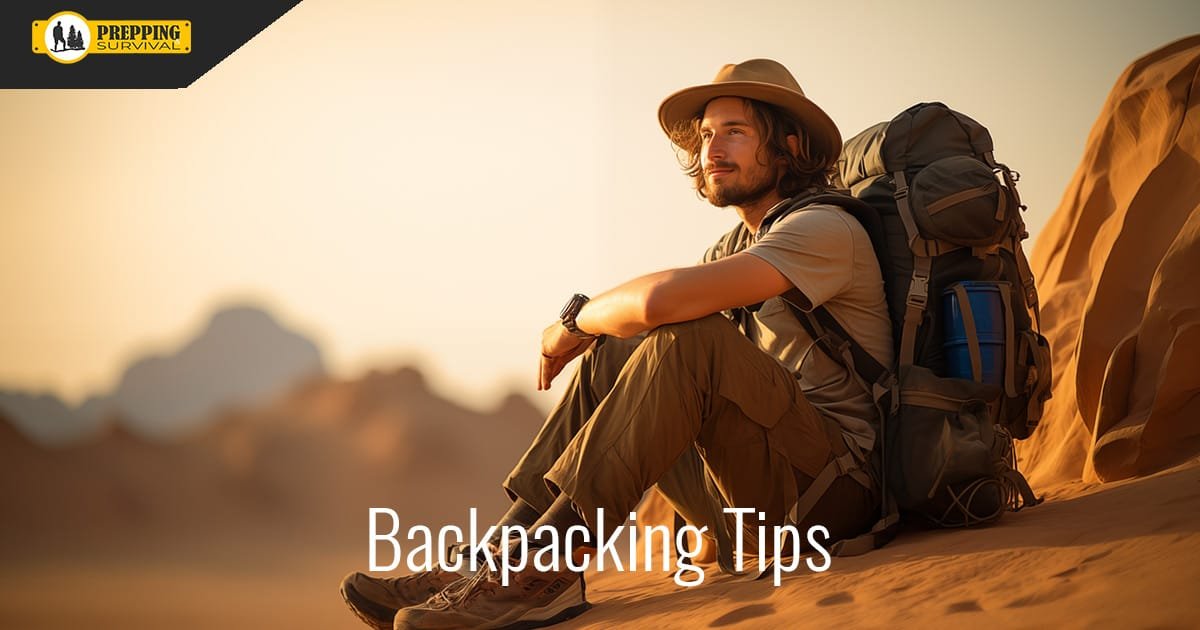Cyber threats aren’t just “out there” anymore—they’re part of everyday life. From fake emails trying to trick you into clicking a link, to criminals locking up a company’s files for ransom, the dangers are real and constant.

Approx reading time: 7 minutes

Surviving the outdoors (backpacking) is one of the most important skills everyone should master. It will help you face unexpected events and ensure you get through them easily.
Knowing what sort of gear to carry while backpacking and what to avoid can sometimes be challenging, especially when you are a beginner with limited experience.
However, the only way to ensure survival in such situations is to carry certain essentials and avoid items that you can do without. This will also make it easier for you to carry your backpack and move with it without getting exhausted too soon.
We’ll cover a few survival backpacking tips for beginners to help you pack your bag properly to get through uncertain events.
One of the most important things you need to do is survival training. You have to prepare yourself mentally and physically to face unexpected events. That is the only way to avoid panicking at the wrong time and ensure you make it through.
When it comes to backpacking, basically you have to prepare yourself physically to avoid exhaustion. That means taking regular hikes carrying your survival backpack and getting comfortable walking long distances with it.
You can use your survival backpack for your hiking trips, for example.
Just make sure you fill it with enough items to get accustomed to the weight. This will help you strengthen your back and shoulder muscles and make it easy for you to move around with your backpack when a serious situation happens.
Practice packing and know where certain items should go. Knowing your backpack inside-out is important, because there may be ocassions when you need to find something without proper light, with one hand, or similar. If you’ve just bought your gear, this is the first thing you really should not skip.
Identify and only add essential items to avoid too much weight and exhaustion. Learn about the kind of supplies that are crucial to survival and only pack the essentials. Identify items you can do without and don’t add them to your survival bag. Doing so is a great way to keep your pack light and ensure you have all you need to survive the outdoors at the same time.
When it comes to backpacking, going outdoors without a shelter is a bit optimistic, to put it mildly. You need to be prepared to hike for some time, possibly weeks, and not having some sort of shelter is plan crazy, because you’ll either depend on natural shelters (like caves) or have huge problems resting. Buy yourself a tent that provides shelter from the weather, insects and possibly even predators, along with some sleeping pads that will let you rest while in the wild.
The most important things to consider when choosing your tent and sleeping pads are comfort, weight, warmth, inflation level, and durability. Always choose a high-quality and lightweight tent that’s easy to carry. It really pays to invest some time for research, because wanting too much – or not wanting to spend too much – can cost you later.
There’s a chance that camping gear that will suit your needs may seem overpriced to you. After all, the budget is always important. But don’t fall for the cheapest solutions, because they will almost certainly fail you at one of the points listed above. While it may look great, it’s far from being really important – it’s better to be a bit less visible in dangerous situations. Plus, the tents built to look great will likely lack durability.
Shop for your tent at your local stores or reputable online retailers like Amazon. There’s a whole world of tents available on Amazon, and you’re sure to find something that will suit your plans and likings. Depending on who you’re planning to take with you while backpacking, you can choose small tents (2-4 persons) or large tents that can accomodate 10 or even more people. Of course, the size of the tent will also determine your options to carry it around, which is a very important issue when backpacking.
It’s important to read product features and customer reviews to ensure you buy a quality product that won’t give you frustrations down the road.
Don’t forget to add a sleeping pad to your backpack. It will provide comfort and help you retain heat throughout the night if you find yourself camping in a cold area. Also, rest assured that sleeping on rocks or uneven places will make you tired, which brings motivation down expressly.
Choose between self-inflating pads, insulated air pads, and closed-cell foam pads.
Self-inflating pads use an open-celled foam that traps air and retains heat. They are comfortable, durable, and offer great insulation. Their most important bonus is that they literally inflate themselves, without you needing to do anything but unfold them. Later, if you want to adjust their firmness, simply open the pad’s valve and add or release air. However, self-inflating pads are usually bulkier, more expensive, and heavier than simple foam pads.
Insulated air pads are lightweight, plush, pack down small, and have different insulation levels. They are usually thicker, which ensures more comfort on the hard ground and debris, but possibly a bit more easy to damage on hard rocks or branches.
There are many models to choose from. All you have to do is buy one that suits your need. The only disadvantage of using insulated air pads is that they are possibly a bit less durable and for sure take more time to set up.
Closed-cell foam pads on the other hand are affordable, durable, extremely light, flexible, and water-resistant. You can use them for decades and they’ll still retain their strength and shape. These pads are made up of dense foam with tiny air cells that are completely closed. They can be rolled up or folded in a Z formation, which can make it easy for you to add them to your pack. Since they have no air chambers, Closed-cell pads can be used frequently without the risk of popping.
On the downsize, they are larger in size when packed, and this makes them a little more uncomfortable, bulky, and often also more difficult to clean.
Be certain to choose a quality backpack that can easily hold all your survival supplies, protect your items from weather damage, and withstand possible changing temperatures during backpacking. It’s all mandatory for backpacking, and even more so in the special situations.
Make sure you buy a durable backpack that can last longer in the outdoors. That way, you can use it whenever you need to and easily carry your personal survival tools.
Consider primarily the size, comfort, materials used and flexibility.
It is very important to buy a pack that has enough room for all your essential items. Select these items and don’t forget to include your clothing, food supplies, tent, and possibly other important gear.
Pick one that’s easy to carry and allows you to secure your supplies.
Materials used to make the backpack are important – know the type of material your backpack is made of to ensure protection for your survival items. Buy one that can protect your supplies from rain, snow, heat, and sand.
The backpack you chosse for your backpacking needs should provide you with the comfort you need to carry all your survival equipment around. So, choose one with padded shoulder straps, a hip belt, and elastic compression straps to minimize clutter. If possible, test the backpack if the seller allows you to. Just fill the backpack with stuff to add some weight and then walk around for some time. Depending on your stamina and training levels, you should not feel any pain in your shoulders and your back.
Last but not least – consider items accessibility. Make sure you can quickly gain access to important items, such as your clothing, ID, tools and medication. You could run into situations when this could be essential, and it’s important to think about it.
For backpacks, the same rules apply as for the sleeping pads and tents. Shop your local stores or use reputable online retailers like Amazon, where loads of backpacks of all sizes and quality are available. Only by shoosing the right gear your backpacking experience will be really good.
To read some more about choosing the right bug-out bag, read this post.
If you’ve read so far, you’re probably aware that backpacking and surviving in the open is quite different that what you expected. It’s understandable, as for most of us, the experience we have with such things come primarily from the TV shows. Many have never even joined the scouts, which is actually a great opportunity to learn a lot about miving around in the wild.
One thing you should really remember: backacking is an adventure per se, and if it takes place during the emergency situation, even more so. You’ll be scared, nervous and lost, and the better you prepare, the better chance you have to succeed.
In the second part of this post (access HERE), we’ll discuss the next few important parts of getting ready for backpacking, including:
Read also that, and remember to check for possible updates, because we’ll be on a lookout for new informations and backpacking tips you can use.
Good luck!